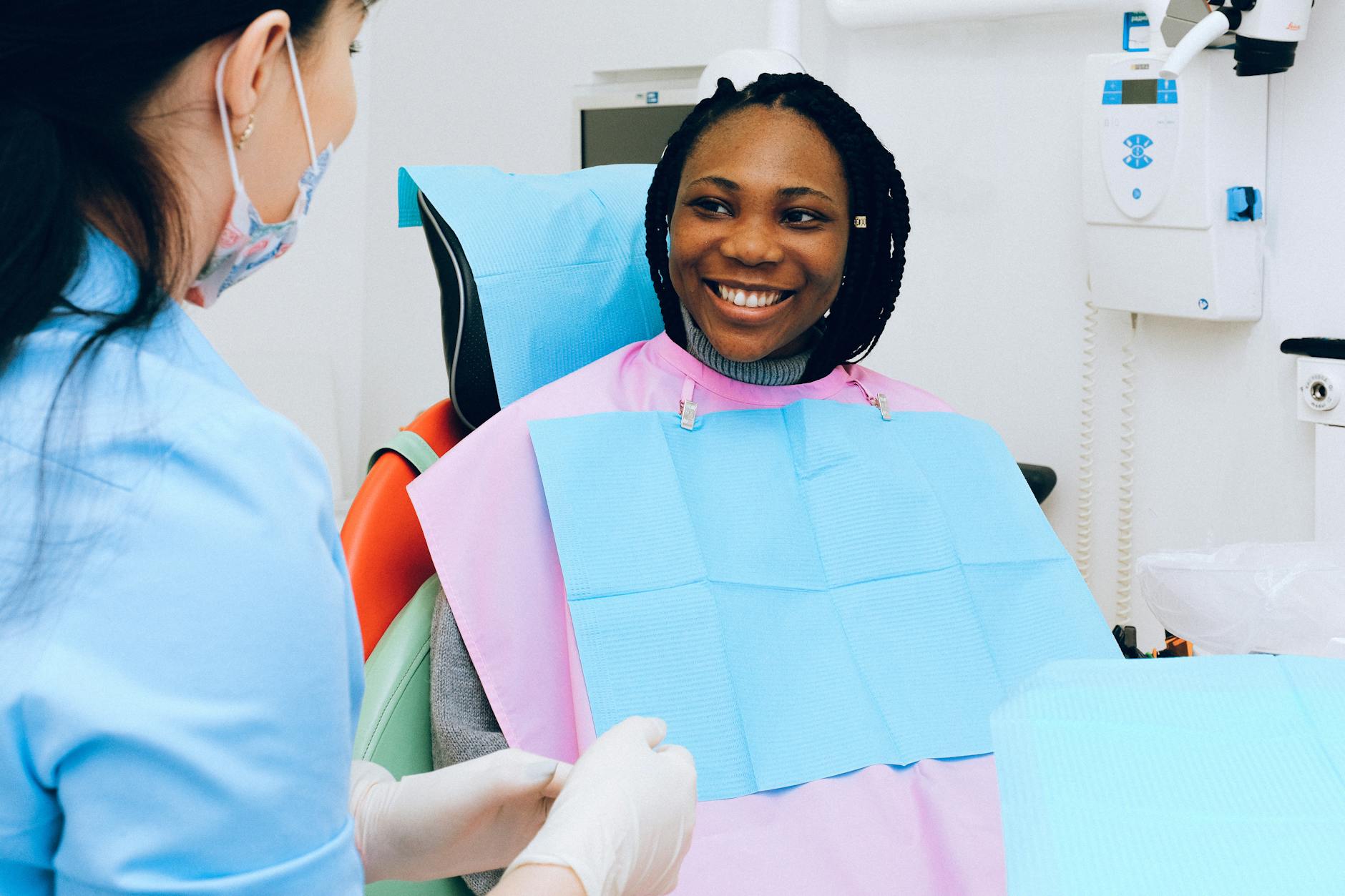Understanding Biocompatibility in Dentistry
Biocompatibility describes how safely a dental material interacts with your mouth and body. A biocompatible restoration supports function without irritating tissues, triggering allergies, or breaking down into harmful byproducts; it should also resist corrosion and excessive wear in saliva. Because every mouth is a complex environment—temperature swings, chewing forces, bacteria, and pH shifts—materials are chosen not only for strength and esthetics but for how gently they coexist with your oral tissues over time.
In my practice, selection starts with evidence-based materials that meet established safety standards and have long clinical track records. I consider individual factors such as any known metal or resin sensitivities, the presence of existing metals (to reduce galvanic interactions), bite forces, and the specific tooth’s function. When discussing biocompatible dental materials options, we balance ceramics, polymers, and modern alloys, aiming for minimal reactivity, durability, and serviceability if future care is needed. If you notice unusual sensitivity, swelling, or a skin or mouth rash after treatment, please call our office during business hours so we can examine the area and adjust as needed.
- Rinse gently with lukewarm saltwater.
- Avoid very hot, cold, or sticky foods on the treated side for a day or two.
- Keep the area clean with a soft brush; do not pick at gums or the restoration.
- Chew on the opposite side until we’ve checked your bite in person.
Types of Biocompatible Dental Materials
Biocompatible materials are chosen to work harmoniously with teeth and oral tissues while meeting the demands of daily chewing, temperature changes, and hygiene. When we consider biocompatible dental materials options, we look for stability, low allergenic potential, and proven performance in the mouth. The right choice depends on the tooth, location, and your individual health history.
- Ceramics (such as high-strength zirconia and glass ceramics): inert, durable, and plaque-resistant for crowns, inlays, and onlays.
- Titanium for implants and posts: widely accepted by bone and soft tissue, supporting long-term function.
- Tooth-colored composite resins: conservative fillings and bonding with modern, low-leach formulations and high polishability.
- Glass ionomer and resin-modified glass ionomer: tooth-friendly liners and restorations that bond chemically and release fluoride.
Calcium-silicate (bioceramic) cements: biologically active sealers and pulp-capping materials that encourage mineralization and sealing.
Adhesives and luting cements: selected for reliable bonding and low sensitivity potential, matched to the restoration and tooth.
If a new restoration feels high, a surface irritates your cheek, or you have unusual sensitivity, simple home steps include gentle rinsing with lukewarm salt water and avoiding chewing on that spot until you’re seen. Keep the area clean with a soft brush; do not try to adjust or remove anything yourself. Please contact our office during regular business hours for a prompt evaluation.
Benefits of Using Biologic Materials
Biologic dental materials are chosen for how gently they interact with your body, helping limit inflammation and supporting healthy gums around restorations. When we talk about biocompatible dental materials options, we’re focusing on ceramics, high‑purity metals, and modern adhesive systems that behave predictably in saliva and next to soft tissue. Their stable chemistry lowers the likelihood of corrosion, taste changes, or galvanic “zing,” and their insulating properties can make teeth feel more comfortable after treatment. Many of these materials also allow conservative bonding, which helps preserve healthy tooth structure.
Patients often notice practical advantages: natural‑looking translucency, smooth surfaces that tend to accumulate less plaque when polished, and restorations that are easier to monitor on routine X‑rays. Because every mouth is unique, material selection also considers allergies, bite forces, and the specific tooth location—an individualized approach that aims for durability without sacrificing tissue health. If you experience unusual irritation or persistent sensitivity after a procedure, simple steps at home—gentle brushing, lukewarm saltwater rinses, and avoiding very hot, very cold, or hard foods on that side—may keep you comfortable temporarily. Please contact our office during regular business hours so we can examine the area and make any needed adjustments in person.
Tradeoffs of Choosing Biologic Options
Biologic materials aim to be kind to tissues and minimize unwanted reactions, but every choice involves tradeoffs. Some options are more technique-sensitive to place, may perform differently under heavy bite forces, or have less long-term data than time-tested metals. When we discuss biocompatible dental materials options, I match the material to the tooth’s job, your health history, and the procedure’s demands so benefits outweigh compromises.
In practical terms, metal-free or resin-based restorations can be beautifully conservative and esthetic, yet large spans or high-stress areas may challenge their fracture resistance and wear over time. Certain adhesives require a very dry field; achieving that precision sometimes means longer visits or staged care. Repairability also varies—some materials can be spot-repaired, while others need replacement if chipped. Radiographic visibility and future adjustability differ too, which can influence monitoring and maintenance. After any new restoration, simple home steps help: brush and floss gently around the area, consider a warm saltwater rinse, and avoid very hard, sticky, or extreme-temperature foods for the first day unless you’ve been advised otherwise. If your bite feels “high,” you notice lingering pain beyond a couple of days, swelling, or anything feels loose or rough, please contact the office during business hours so we can examine the area in person and keep you comfortable.
Common Applications for Biocompatible Materials
Biocompatible materials appear throughout modern dentistry, from routine restorations to surgical care. I select them when they can reduce irritation, support healing, and provide durable function. Here are common places you’ll see biocompatible dental materials options in care today.
- Tooth-colored fillings and inlays: contemporary ceramics and composites chosen for strength, polishability, and gentle behavior toward teeth and gums.
- Crowns and bridges: high-strength ceramics designed for long-term wear and smooth margins that are friendly to surrounding soft tissue.
- Implant restorations: titanium or ceramic components selected for soft-tissue compatibility, stable integration, and ease of cleaning.
- Root canal treatments: calcium-silicate “bioceramic” sealers and repair materials that seal well and are kind to nearby tissues.
Gum and bone procedures: resorbable membranes, graft substitutes, and sutures that support healing and gradually dissolve as tissues recover.
Cements and adhesives: formulations aimed at strong bonding while reducing post-operative sensitivity; some release helpful ions like fluoride or calcium.
If you experience mild gum tenderness or sensitivity after new dental work, keep the area clean with a soft brush, consider a brief warm saltwater rinse, and avoid very hard or sticky foods. Do not try to adjust or re-seat any restoration at home. If pain persists, swelling develops, or a crown, filling, or appliance feels loose, please arrange an in-person evaluation during normal business hours so we can assess and treat the cause promptly.
Sustainability in Dental Material Choices
Sustainable choices in dentistry start with selecting materials that perform reliably over time, because fewer replacements mean less resource use and less waste. When I evaluate biocompatible dental materials options, I weigh clinical longevity, the energy and water used to manufacture and sterilize, packaging footprint, and how safely a material can be disposed of at the end of its service. At home, simple habits—daily brushing and flossing, wearing a nightguard if you already have one, and avoiding chewing very hard items—help restorations last longer and reduce replacement waste; if something chips or comes loose, please call the office during business hours for an evaluation. Sustainability complements, never replaces, the first priority: your health.
- Favor durable, repairable restorations and conservative tooth preparation to preserve natural structure and reduce future material needs.
- Use digital diagnostics and impressions when appropriate to limit single-use plastics, shipping, and remakes associated with traditional workflows.
- Select suppliers that minimize packaging or offer recycling pathways, and streamline chairside setup to curb unnecessary disposables.
- Capture and manage metal and particulate waste responsibly to protect waterways, alongside proper segregation of clinical waste streams.
Prefer reusable, sterilizable instruments and trays when feasible while maintaining strict infection control and efficient sterilization cycles.
Patient-Centered Approaches to Material Selection
Material selection is a shared decision shaped by your medical history, prior dental experiences, goals, and values. Together we review the science and your exam findings to select among biocompatible dental materials options—such as ceramics, composite resins, gold alloys, titanium, or zirconia—so the choice fits your biology, bite, and esthetic priorities. When appropriate, we may use a provisional phase or limited observation period to gauge comfort and function before committing to a final material. We also discuss maintenance and how future treatments might interact with today’s choice.
- Before your visit: jot down allergies, past reactions to jewelry or dental work, and current medications.
- Note any symptoms: timing, related foods or oral products; photos can help if a rash or sore appears.
- Keep the area clean with gentle brushing and flossing; a mild warm saltwater rinse may be soothing.
- If something feels off with a recent restoration, chew on the other side and avoid very hot or cold foods until we can check it.
Bring previous dental records or material ingredient sheets if you have them; they help us compare choices.
Please call the office during business hours for assessment; urgent concerns should be seen promptly in person.
Future Trends in Biologic Dentistry
Future trends in biologic dentistry are moving toward materials and techniques that support oral function while minimizing systemic exposure and preserving natural tooth structure. As new biocompatible dental materials options emerge, the emphasis is on measurable biocompatibility, longevity, and the ability to maintain or restore the body’s own protective processes. Expect more personalized selection of materials, guided by clinical history, scientific data, and careful follow-up of how restorations perform over time.
- Bioactive, remineralizing restoratives designed to support the natural repair of enamel and dentin.
- Next-generation ceramics and polymers, including metal-free implant and prosthetic components with refined surfaces.
- Digitally designed, milled, or 3D-printed restorations that fit precisely with less tooth reduction.
- Regenerative approaches in endodontics and periodontics using bioceramics and resorbable scaffolds.
As technology evolves, so does the need for strong evidence and prudent adoption. In my practice, new materials are introduced only after peer-reviewed support and real-world performance tracking, and choices are tailored to individual goals and sensitivities. If you notice a reaction or new discomfort around a restoration, keep the area clean with a soft brush, floss gently, and a warm saltwater rinse can be soothing; avoid chewing hard foods on it. Please arrange an in-person evaluation during business hours so we can diagnose and address the cause promptly.
Considerations for Different Patient Needs
Choosing materials for a filling, crown, or implant restoration isn’t one‑size‑fits‑all. I match your biocompatible dental materials options to your medical history, the tooth’s job in your bite, and your goals for appearance and maintenance. The aim is a restoration that functions predictably while being kind to your teeth, gums, and the rest of you.
- Medical history and sensitivities (e.g., metals, resin monomers, eugenol, latex)
- Tooth location, chewing forces, and any clenching or grinding
- Esthetics, translucency, stain resistance, and wear on opposing teeth
- Saliva flow, cavity risk, and dietary acid exposure
Future care: repairability, radiographic visibility, and ease of cleaning
Patients with a history of metal sensitivity or contact dermatitis may do best with ceramic or certain polymers, while others benefit from tried-and-true noble metals; when histories are complex, I may coordinate with your physician or allergist. For high cavity risk or dry mouth, materials that bond chemically and are gentle to gums can help; heavy grinders often need higher-strength solutions and protective measures. Mixing dissimilar metals can create galvanic “zing” in rare cases, so I plan with the whole mouth in mind. Pregnancy and medical treatments that affect healing or saliva call for conservative, low-exposure protocols and fewer, shorter visits when feasible. If you experience unusual taste, sore gums, or lingering sensitivity after new dental work, keep the area clean, avoid very hot or very cold foods, and gently rinse with lukewarm saltwater. Do not adjust or remove a restoration at home—please contact the office promptly during business hours so we can examine and help.
Evaluating Material Performance and Safety
Evaluating material performance and safety means balancing how a restoration behaves in the mouth with how your tissues respond to it. I look for regulatory clearance, recognized standards, peer‑reviewed clinical data, and real‑world outcomes before a material becomes part of my routine. We’ll discuss your biocompatible dental materials options in the context of your medical history, bite forces, esthetic goals, and how the material can be maintained or repaired over time.
Key checkpoints include: biocompatibility (minimizing allergens and leachable components), strength and wear, bond quality and a tight marginal seal to limit microleakage, corrosion resistance and avoiding galvanic reactions with existing metals, thermal expansion close to natural tooth, smooth polishable surfaces to reduce plaque, radiopacity for future diagnostics, and the ability to repair or remove the material conservatively. Technique matters too: moisture control, proper curing, and finishing strongly influence outcomes. At home after a new filling, crown, or appliance, mild sensitivity can be normal; you can gently rinse with lukewarm saltwater, keep the area clean, avoid very hot or very cold foods, and remove any removable appliance that is rubbing. If you notice persistent pain, swelling, rash, or a sharp edge, please contact the office during business hours so we can evaluate and adjust in person.
Frequently Asked Questions
Here are quick answers to common questions people have about Biologic Materials in Dentistry: What I Use and Why in Glendale, AZ.
- What are biocompatible dental materials?
Biocompatible dental materials are those that interact safely with your mouth and body. They support function without causing irritation, allergic reactions, or breaking down into harmful byproducts. These materials also resist corrosion and wear in the complex environment of the mouth, where temperature, chewing forces, bacteria, and pH levels can vary.
- What factors are considered when selecting biocompatible dental materials?
When selecting biocompatible dental materials, considerations include the material’s biocompatibility, strength, durability, appearance, and the individual’s medical history, including any metal or resin sensitivities. Other factors are the location and function of the tooth, existing dental materials to avoid galvanic interactions, and the patient’s bite force.
- What types of biocompatible materials are commonly used in dentistry?
Common biocompatible materials in dentistry include ceramics like zirconia for crowns and bridges, titanium for implants, tooth-colored composite resins for fillings, glass ionomer for restorations and liners, and calcium-silicate cements for root canal treatments. These materials are chosen for their safety, low allergenic potential, and performance in the mouth.
- What are the benefits of using biocompatible dental materials?
Biocompatible dental materials are beneficial as they minimize inflammation, help to preserve gum health, and provide a stable and comfortable experience after treatment. They offer natural-looking translucency, smooth surfaces that resist plaque accumulation, and are easier to monitor with X-rays. Their insulating properties can increase comfort for patients.
- What tradeoffs might occur with biologic dental material options?
Tradeoffs with biologic materials may include sensitivity to placement techniques, limitations under high stress or large spans, and less long-term durability data compared to traditional metals. They might also require more precise conditions during placement, potentially leading to longer dental visits or staged treatments.
- How do biocompatible materials support sustainability?
Biocompatible materials contribute to sustainability by reducing the need for replacements, thus decreasing resource use and waste. Selecting durable, repairable restorations and using digital diagnostics can limit single-use plastics and unnecessary disposables. Providers also strive to use efficient manufacturing and proper waste segregation practices.
- What considerations are important for patients with a history of sensitivities?
Patients with metal sensitivities or allergies to dental materials may benefit from alternatives like ceramics or select polymers. Considerations include the material’s allergenic potential, its behavior under the specific conditions of your mouth, and coordination with a physician or allergist if necessary. An individualized approach ensures the chosen materials align with patient-specific needs and goals.
Medical sources (PubMed)
- Sailer I, et al. Periodontol 2000. 2022. “Prosthetic failures in dental implant therapy.”. PMID: 35103329 / DOI: 10.1111/prd.12416
- Monje A, et al. Periodontol 2000. 2022. “Management and sequelae of dental implant removal.”. PMID: 35103326 / DOI: 10.1111/prd.12418
- Siadat H, et al. J Prosthodont. 2017. “Interim Prosthesis Options for Dental Implants.”. PMID: 26805651 / DOI: 10.1111/jopr.12421
- Kullar AS, et al. Dent Clin North Am. 2019. “Are There Contraindications for Placing Dental Implants?”. PMID: 31097131 / DOI: 10.1016/j.cden.2019.02.004
- Suh Y, et al. Med Gas Res. 2019. “Clinical utility of ozone therapy in dental and oral medicine.”. PMID: 31552882 / DOI: 10.4103/2045-9912.266997
- Wei X, et al. Int J Oral Sci. 2022. “Expert consensus on regenerative endodontic procedures.”. PMID: 36450715 / DOI: 10.1038/s41368-022-00206-z




